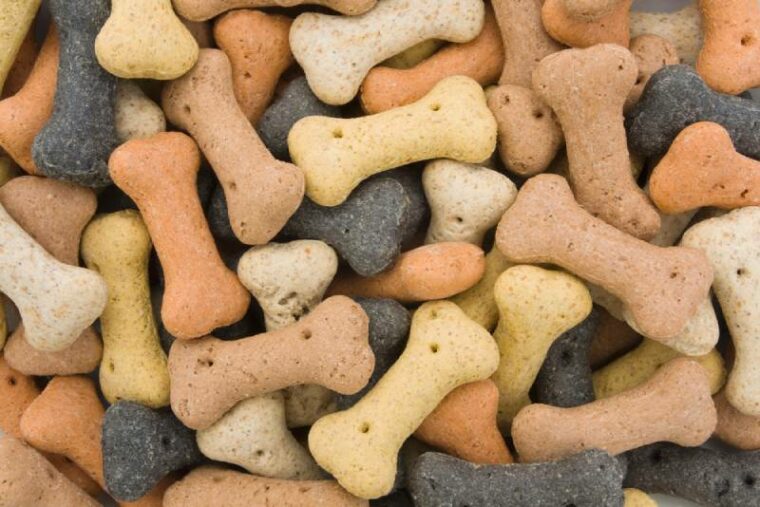
Click to Skip Ahead
Just because a treat is on the shelf doesn’t mean it belongs in your dog’s mouth. We would love to feel good about any biscuit or bone we add to the cart, but the truth is sometimes companies compromise on healthy ingredients to make a product more profitable or palatable. For example, though dog treats probably won’t contain anything super toxic like chocolate, they might still include questionable ingredients like food dyes to make it more aesthetically pleasing. We’ll talk more about foods and additives you’ll commonly see on the ingredients list and whether you should avoid them.
The 9 Healthy Dog Treat Ingredients
The best type of dog treat is one your pup likes that’s appropriate for their individual dietary needs and sneaks in some extra nutrients. The most important thing to look for in dog treats are ingredients that are whole, nutritious, and safe for your dog. Look for treats that contain meats, fruits, and vegetables, as well as other dog-safe ingredients, such as peanut butter, that help give the treats more flavor and texture to make them more palatable.
Thankfully, there are many treats that are tasty and nutritious for your dog. The ingredients in dog treats can vary, but there are some ingredients that many dog treats have in common. But just because we haven’t listed an ingredient here, it doesn’t necessarily mean that it isn’t safe for your dog.
Check out these nine snacks that your dog will love to sink their teeth into:
1. Named Sources of Meat Protein

Look for labeled whole meat proteins on an ingredient list, such as chicken, beef, or salmon, as opposed to “meat by-products” or meals.
2. Blueberries
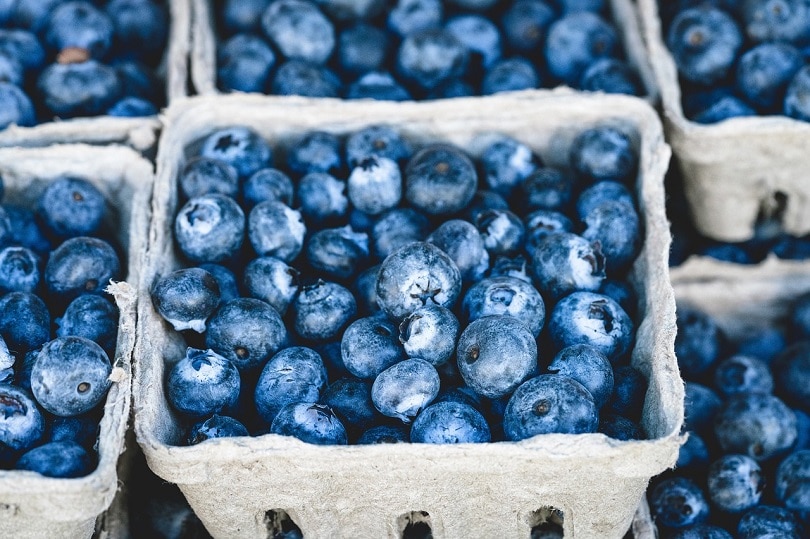
These little berries yield powerful antioxidants. Blueberries are a common ingredient in commercially produced treats. If you prefer to treat your dog to homemade goodies, you can plop some blueberries into popsicle molds, bake them into a dog biscuit, or serve them whole.
3. Oats
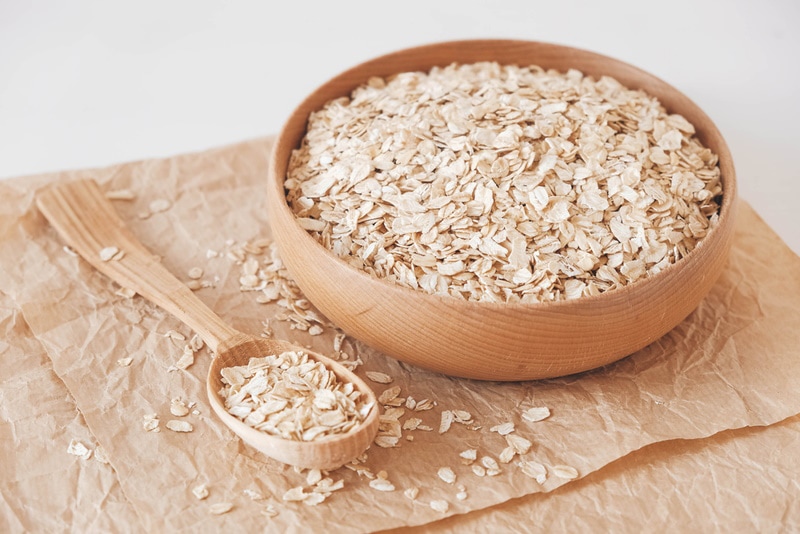
Whole oats and oat flour are gluten-free grain options that give your dog lots of fiber. Many dog treats use oat flour as a biscuit base. You can also make your own by blending whole rolled oats (not steel-cut or quick oats) in a food processor.
4. Pumpkin
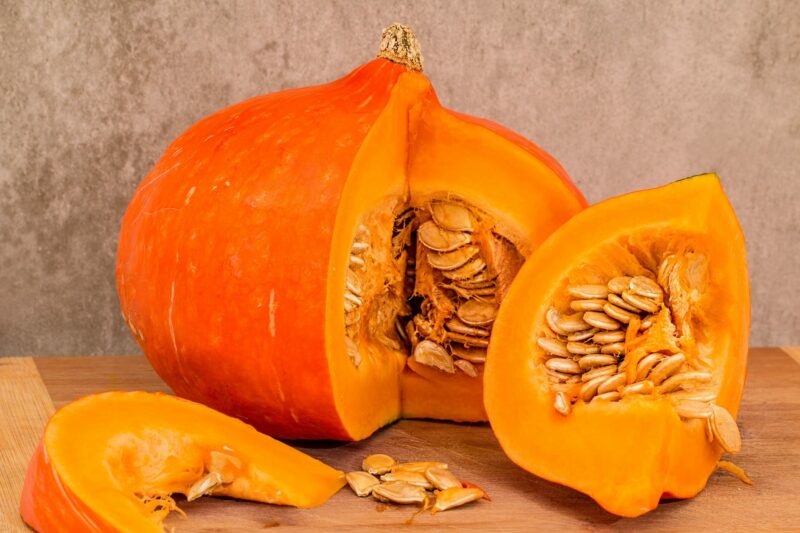
Pumpkin is not limited to pumpkin spice latte season. Pumpkin is a great source of dietary fiber and dogs love the taste. If you can’t find any pumpkin dog treats, you can pick up some canned pumpkin from the grocery store and serve it plain, just be sure to do so in moderation. This fruit is also a good dietary supplement for soothing your dog’s upset tummy. Just make sure not to accidentally buy pumpkin pie filling, which contains sugar and dangerous spices.
5. Banana
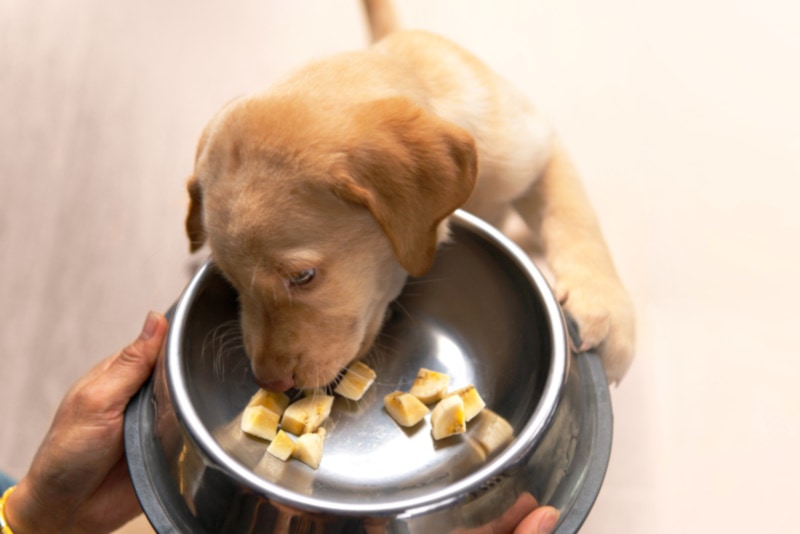
A tasty source of potassium, bananas can also help soothe your pup’s upset stomach. They’re a pretty popular ingredient in commercially produced and homemade dog treats. However, if you’re feeding your dog a plain banana, you should only give them a couple of slices because of the relatively high amount of natural sugars.
6. Carrots
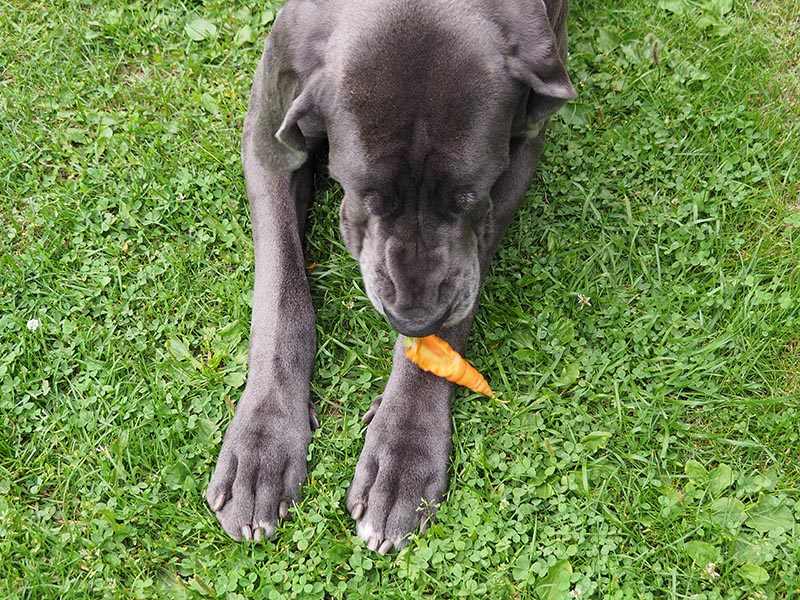
Many dogs crave the satisfying crunch of a raw carrot. This easy treat hosts beta carotene, fiber, potassium, and several vitamins. Dogs can have carrots raw or cooked into a treat.
7. Carob
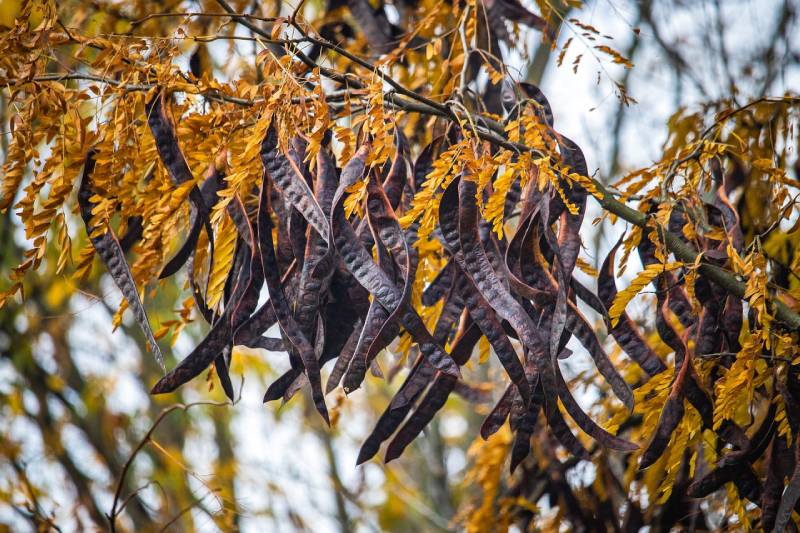
Carob is frequently used as a dog-friendly alternative to chocolate, but do you know what it actually is? This Mediterranean fruit pod has a similar taste to cocoa without the caffeine and theobromine that’s toxic to dogs. Carob yields a high amount of fiber, protein, and calcium, while being low in calories and natural sugar. Not to mention, it’s low-fat. In other words, it can actually be good for your dog in small amounts.
8. Coconut Oil
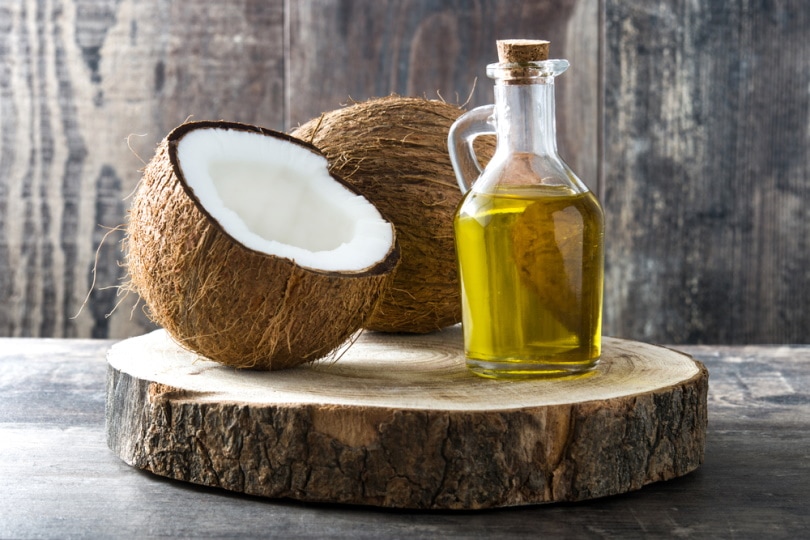
Coconut oil is considered to be a good source of healthy fats and is a vegan alternative to butter. Since many dogs are lactose intolerant, coconut oil may be a safer option to use in dog treats than butter. However, dogs shouldn’t have too much of a treat containing coconut oil or they might get an upset stomach due to the abundance of oil and fats.
9. Peanut Butter
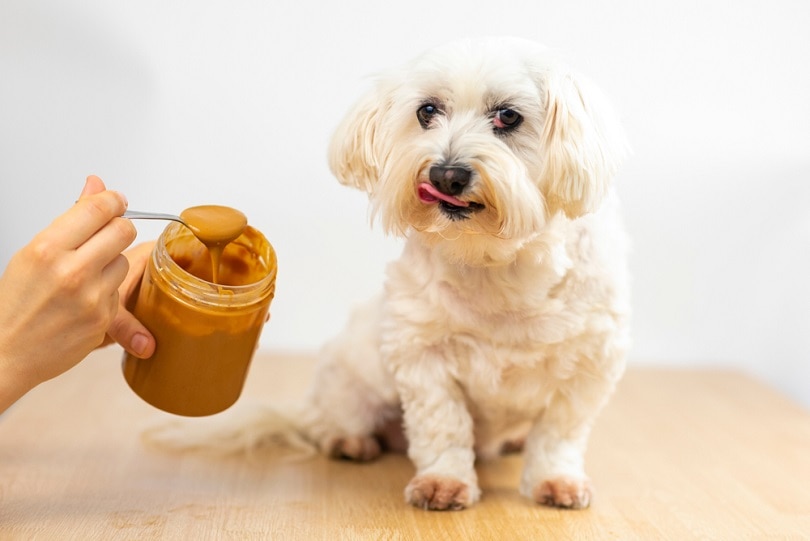
Dogs love the taste of peanut butter, and it’s a good source of protein. Peanut butter is one of the most popular dog treat flavors. Just make sure your peanut butter doesn’t contain any artificial sweeteners like xylitol if you want to make your own treats or give them a small lick occasionally.
The 5 Common Ingredients That You Should Avoid
Most commercially produced dog treats won’t contain anything that’s dangerous across the board, such as chocolate or xylitol. However, that doesn’t mean that there aren’t some risky snacks on the market. Here’s a list of ingredients (and even some types of treats) you should avoid if you want to play it safe and give your dog the healthiest treats possible:
1. Garlic

As a member of the Allium plant family, garlic is poisonous to dogs. You may ask, why would anyone intentionally give their dog garlic if it’s toxic? Here’s the thing about toxins: many substances are only harmful in certain amounts. The amount of garlic that is toxic to a dog depends on the dog’s size and the form of garlic eaten. Since dogs don’t really need garlic to enhance their treat flavor, it’s best to steer clear of it as an ingredient all together.
2. Sugar
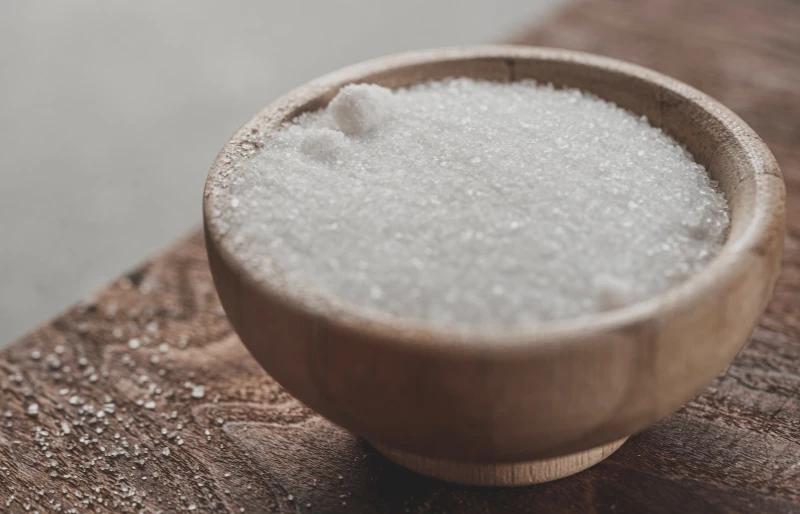
This stuff gets humans and canines in loads of trouble. Although it isn’t a toxic ingredient, the extra calories that sugar provides can increase your pet’s risk of obesity which can lead to diabetes. On the other hand, some artificial sweeteners, like xylitol, are actually toxic to dogs, so it’s best to avoid sugar and sweeteners in their food and treats entirely.
3. Artificial Colors

There are certainly some controversial elements of food dyes for humans, so why should we unnecessarily subject our animal friends to them? Food dyes don’t add any nutritional value to food or make it taste any better. They are mainly for aesthetic appeal, but dogs don’t care what their food looks like. It’s best to forgo the added risk and either use natural dyes, such as beet juice, or skip the coloring altogether.
4. Propylene Glycol

This product is the primary agent in some brands of antifreeze…and it’s likely in your pet’s food. Although it’s not as dangerous as the ethylene glycol that’s used in some antifreeze formulas, propylene glycol is actually still toxic to pets in high enough amounts.
5. Rawhide Bones
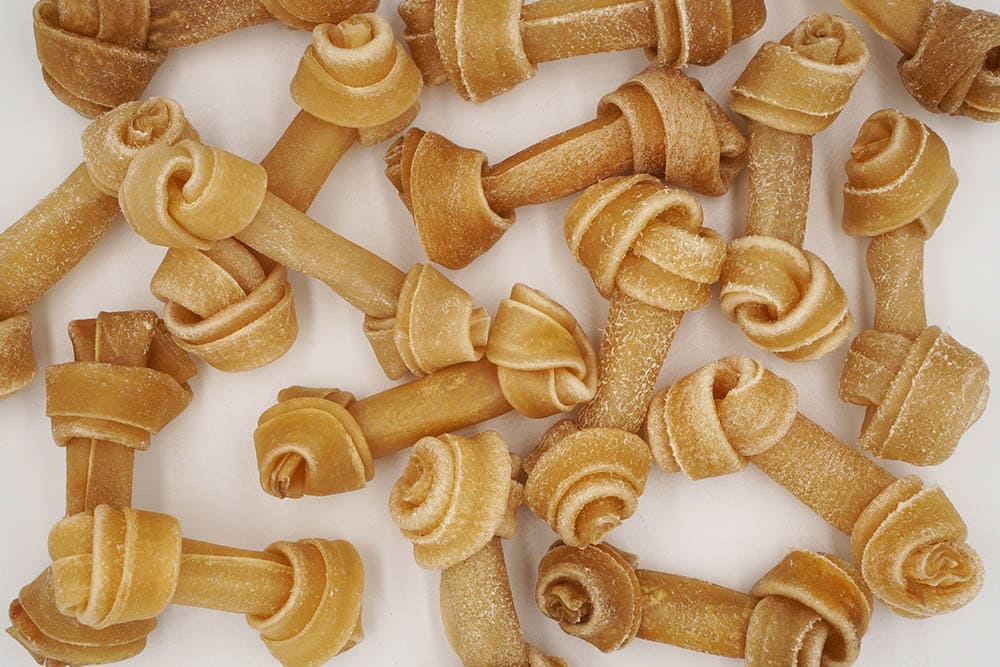
This type of chew is generally considered to be unsafe because it can be a choking hazard, cause gastrointestinal blockages, and carry a risk of salmonella poisoning. Rawhide bones actually aren’t bones at all. They’re chunks of inner cow or horse hides that are pressed into shapes.
Remember to Consider Your Dog’s Dietary Concerns
While most of the ingredients on our recommended list are generally good for dogs, you’ll need to keep your dog’s individual health needs in mind when shopping for their snacks. For example, if your vet suspects a food allergy, you’ll want to steer clear of the ingredient they have problems with. You may also opt for a ‘lite’ version if your pup is pleasantly plump.
How to Treat Your Dog Right
Treats are only meant to be a supplementary snack, even if they do bring some health benefits to your dog’s diet. The general advice is that treats should make up no more than 10% of your dog’s total caloric intake per day. Obviously, the exact number of treats depends on the size of your dog, along with any individual health concerns they may have, and the type of treat you’re feeding. For example, if your dog struggles with obesity, it may be best to cut out treats entirely until they can get their weight back on track.
Conclusion
There’s a lot of “junk food” that poses as dog treats. However, shopping for the most health-conscious snack for your dog becomes easier once you know what to look for. It’s generally best to try to source treats that are as natural as possible, avoiding artificial colors, flavors, and preservatives. If you don’t see a commercially produced treat at the store that fits the bill, you can always opt for whole foods like blueberries instead. Remember, treating your dog is all about moderation. Your dog’s snack should consist of 10% of their daily caloric intake, or less depending on their individual needs. Speak to your veterinarian if you have any questions about the ingredients in your dog’s snacks or how much you can give them.
Featured Image Credit: Lucie Lang, Shutterstock








